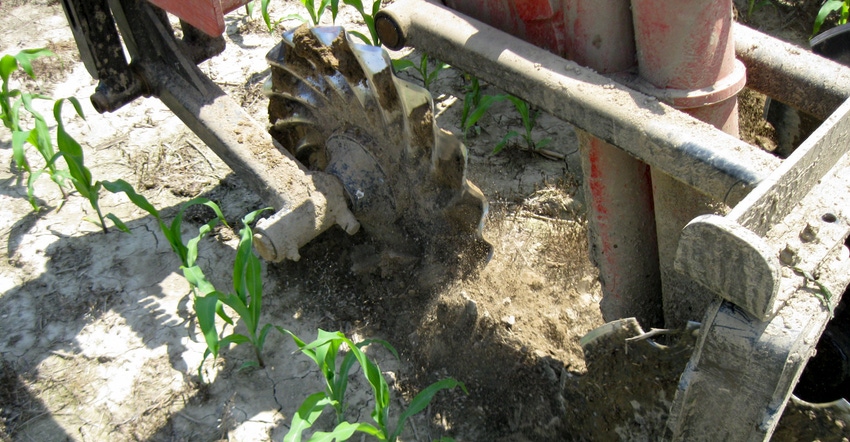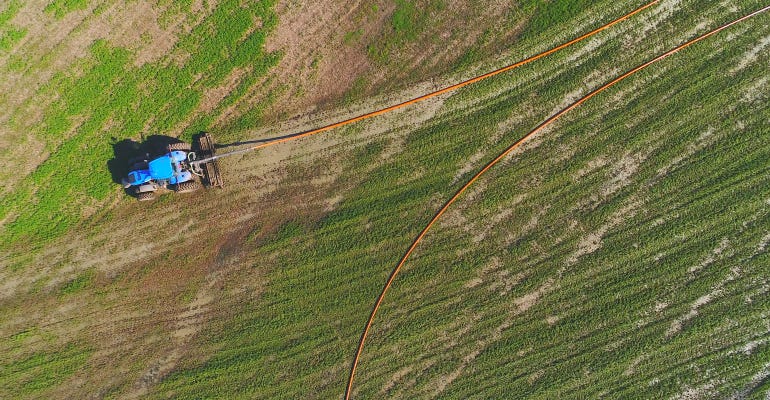
Northwest Ohio is not unlike parts of the Mid-Atlantic and Northeast when it comes to concerns over nutrient use. Farmers are under pressure to reduce nutrient loads in local waterways that drain into western Lake Erie.
Jason Hartschuh, who spoke at the recent New York Farm Show, said that more than half of all manure applications in the western Lake Erie basin occur after silage harvest.
“When we look at the cost of applying this, can we afford to lose all the nitrogen that’s going to leach out, especially in the late fall?” he said. “We need to open up additional times for manure application. Fall application starts as soon as silage is taken off.”
Research by Hartschuh and others has shown the advantages of shifting manure applications to preemergence and side-dress rather than waiting until fall. The goal is to get nutrients applied directly to the crops that need it and to cut down on potential nutrient loss.
The western Lake Erie region is home to many dairy and hog farms. Algal blooms are normal in summer due to the lake being shallow and warm. Hartschuh, an agriculture Extension agent with Ohio State University, said monitoring from the National Water Quality Monitoring Council shows 80% of pollution in the western Lake Erie basin is coming from nonpoint sources, including agriculture, septic systems and small manufacturing plants.
And for the second straight year in 2018, farmers had problems getting manure out of the pits in the fall.
Switching to hoses
Many farms utilize large tanker trucks that collect manure from the lagoons and take it out to pumps in the fields.
Hartschuh said that dragline hoses can go two to three miles and are cheaper to operate than trucks.
“You can move 6,000 gallons a minute with 10-inch hoses,” he said. “The other thing about draglines in these manure systems is that they don’t cause as much compaction.”
 DRAGLINE SAVINGS: While most farmers in northwest Ohio still use tanker trucks to haul manure out to fields, dragline systems can actually save money and reduce compaction, according to research.
DRAGLINE SAVINGS: While most farmers in northwest Ohio still use tanker trucks to haul manure out to fields, dragline systems can actually save money and reduce compaction, according to research.

Manure applications are also becoming more precise. Farmers can literally plug in whatever manure data they have into their nutrient management plan. Some farmers, he said, even have flow systems where they can change the flow of the manure to match the application with what’s being removed by the plant.
“We’re trying to use liquid manure as we do commercial fertilizer, and not just put a flat rate down,” he said.
Injection vs. surface-applied application
Knowing the nutrient content of manure is important when considering the needs of a crop.
Samples show that every 1,000 gallons of swine manure has 37 pounds of ammonia nitrogen, 35 pounds of nitrates, 12.36 pounds of phosphorus and 30 pounds of potassium.
To grow 180 bushels of corn, he said, the crop needs to remove 62 pounds of phosphorus and 134 pounds of nitrogen per acre. You also need 36 pounds of minor nutrients, such as potassium oxide.
Comparing surface-applied applications vs injection started in wheat back in the late 2000s. Some of the first tools used were injection toolbars that cut a slit 2 to 3 inches deep. Researchers did comparisons over three years — from 2007 to 2009 — and found that yields were slightly higher in the surface-applied plots.
From there, he said, the studies shifted to corn with some of the earliest studies done with tankers and Dietrich shanks going in about 6 inches deep.
From 2012 to 2016, researchers compared injection and surface-applied manure applications at preemergence and side-dress. The side-dress application was between 5,000 and 6,000 gallons of swine manure as the goal was to put between 180 and 200 pounds of nitrogen per acre. Commercial nitrogen was put down in the headlands.
The results showed that incorporated swine manure at preemergence added 15.6 bushels of corn per acre over a comparable application of 28% UAN (urea, ammonium nitrate). The surface-applied manure plots lost 26.6 bushels an acre.
When manure was incorporated at side-dress, there was a gain of 18.4 bushels an acre over the UAN plot. Surface-applied plots lost 25.9 bushels per acre.
Incorporated dairy manure at 13,500 gallons, plus 28% UAN, also did better over surfaced-applied in preemergence — 158.7 bushels over 126.7 bushels — and in the side-dress — 164.6 over 135.2. The UAN was added to match nutrient levels in the swine applications as swine manure has more ammonia.
Too big for corn
Side-dressing manure is only good if it doesn’t break the growing corn. Hartschuh said he and the other researchers tried something a little novel: They used pressurized air hoses dragged behind a tractor to see at what size the corn would be damaged by the hoses.
V1 to V4 corn provided a nice window for side-dressing, he said. But issues started occurring at V5.
“The corn will be snapped off at V5,” he said.
Hartschuh said he is encouraged by the overall results of the research, but there are other challenges to overcome. For one thing, many commercial applicators already have draglines, but they are not set up to do 30-inch corn rows.
Hartschuh said grants have enabled the purchase of several manure injection toolbars to compare different machines in different systems.
There is also ongoing research into applying the lessons from the corn plots into soybeans.
About the Author(s)
You May Also Like






